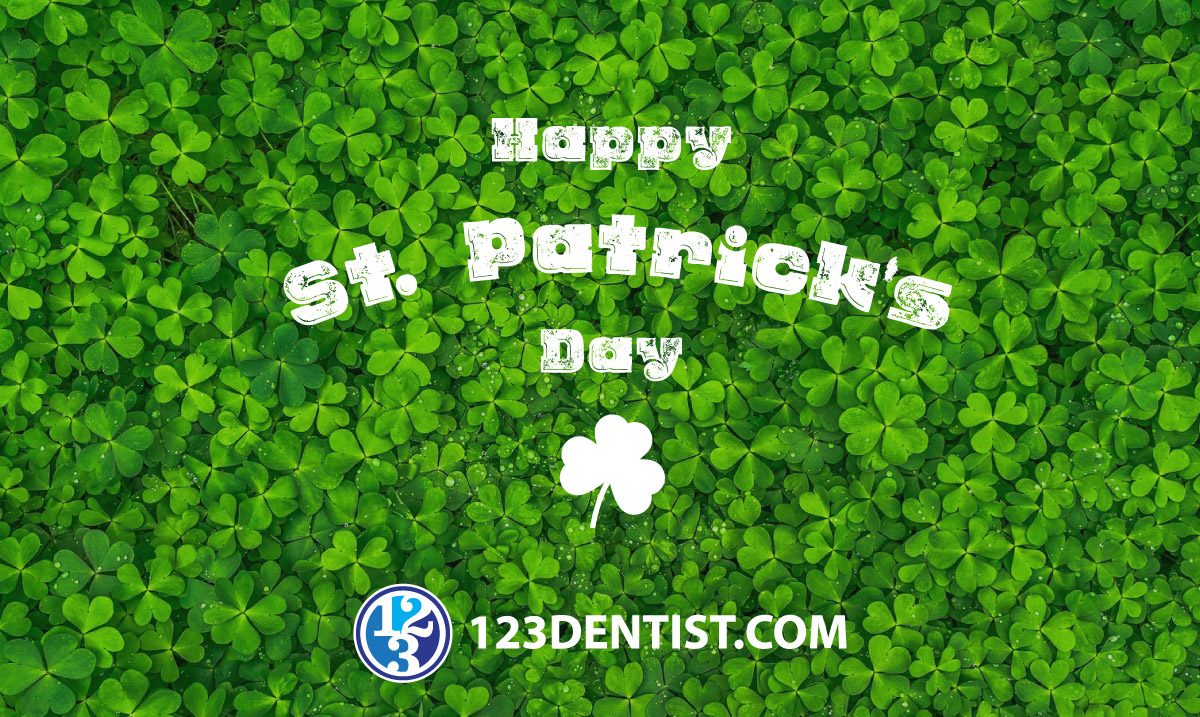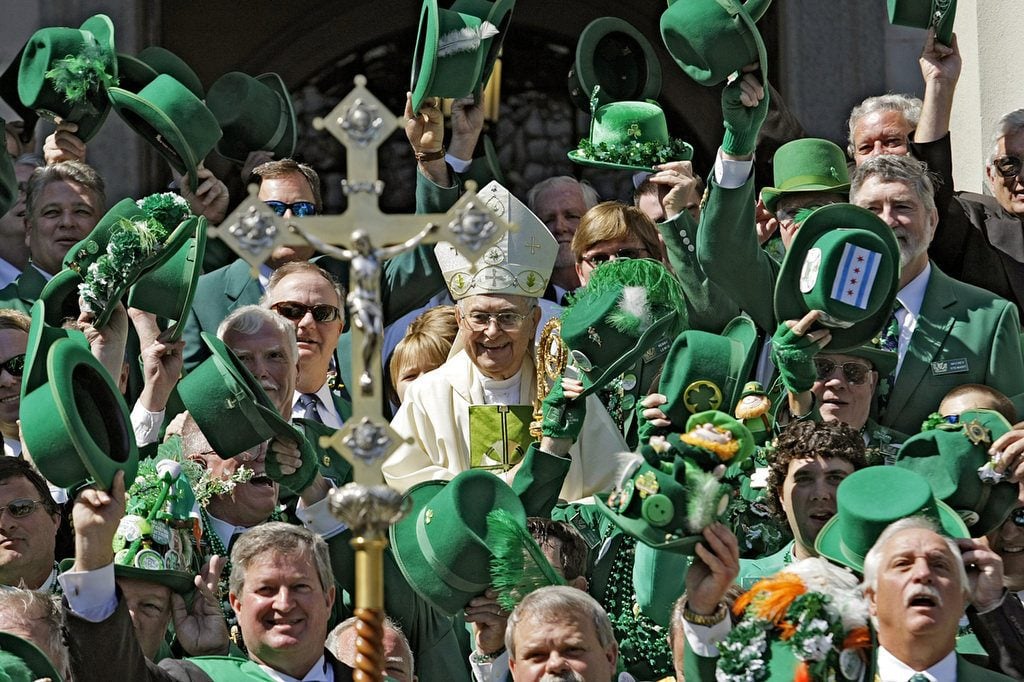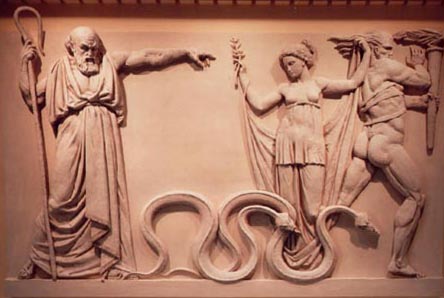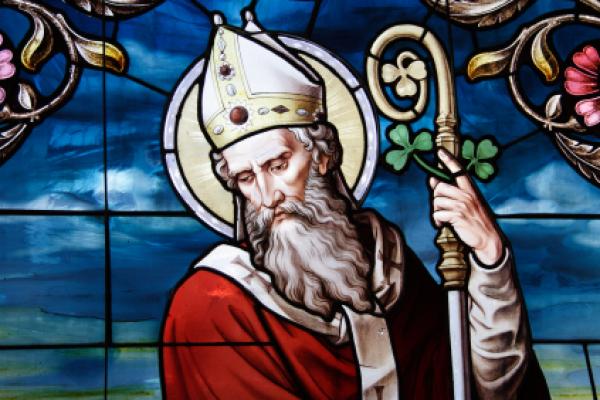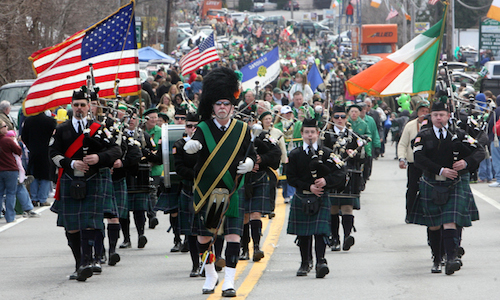Most people celebrating Saint Patrick’s Day this March 17th won’t be aware of the true origins of the holiday, or even its true meaning. Aside from celebrating the Irish, the colour green and whatever shamrock shakes are made from, what is it really about? How did it evolve into the holiday we celebrate today?
We wanted to take a look at the history and evolution of St. Paddy’s Day and hopefully give you and your friends some great talking points when you enjoy that green coloured beer at the neighbourhood Irish Pub.
It’s A Religious Holiday
Given the name of the holiday, it might seem obvious that Saint Patrick was Christian, but most people associate it with celebrating Irish culture, rather than Catholicism. Truth be told, that’s not where it began. Saint Patrick was a prominent bishop and missionary in Ireland near the end of the Roman empire in the mid to late 5th century AD.
Known as the Patron Saint Of Ireland and the Apostle Of Ireland, Patrick was instrumental in bringing the Roman Catholic beliefs to Ireland and in subsequent years, Saint Patrick’s Day became a day to commemorate Catholicism in Ireland. Originally, it was a day of feasting and celebration held every year on the day of St. Patrick’s death, although until the 1700s, the holiday didn’t exist in any formal capacity.
Over the years, there has been a great deal of mythologizing of St. Patrick in history.
Ireland Had No Snakes
One of the more popular myths about St. Patrick’s Day is that he drove all the snakes from Ireland after they attacked him during a 40 day fast. Legend said he drove all the snakes into the sea and that is why there are no slithering serpents there today.
We now know that there were never any snakes in Ireland. One writer hypothesized that the legends about the snakes actually served as a metaphor for Druidic symbols in Ireland, and of St. Patrick’s eradication of the traditions that preceded Catholicism in Ireland.
Saint Patrick Wasn’t Irish
In truth, St. Patrick was taken from his home, either in Britain, Wales or elsewhere, and became a slave to pirates for 6 years. When he was freed, he entered the clergy and later returned to Ireland as a missionary to begin his work.
While he was not in fact Irish by birth, he embodied the spirit of Ireland and a love for the country.
Somewhat ironically, St. Patrick was an immigrant to Ireland the same way so many Irish would later become immigrants in the United States, where modern St. Patrick’s Day was born.
Green Isn’t That Significant To St. Patrick
St. Patrick never wore green according to most accounts, but he did use the Irish Shamrock to explain christian symbols and ideas like the Holy Trinity to his followers.
The shamrock itself held meaning long before Catholicism made its way to Ireland, even in Druid rituals and stories. The significance was the three prongs, as three is a number with significance in Pagan traditions. Green was a colour associated with the shamrock and certain groups in Ireland, and in the mid-1700s it fell out of fashion.
Replaced by blue, the colour then most commonly associated with St. Patrick, it wasn’t until another group of Irish Protestants rebelled against the British and reclaimed green as their symbol. “Wearing the Green” came from a popular theme song for the rebellion and has been synonymous with Irish nationalism ever since.
The Modern Holiday Is American
Well, Irish-American. The very first St. Patrick’s Day Parade was held in Boston in 1737, as a celebration of Irish culture in the colonies. It later spread in popularity to Dublin and other American cities, and is now popular in other countries, including many in Europe and even Asia.
In Ireland, St. Patrick’s Day is a national holiday and has been since the beginning of the 20th century, but the first parade wasn’t held in its honour until the 1930s.
In the mid-1990s Ireland began to use St. Patrick’s Day to promote tourism and cultural identity, some say to reclaim the holiday from the United States where it has become a bit tacky. Others in Ireland and even in the US are concerned that the holiday has become too secular.
Today St. Patrick isn’t much of a thought at all in our celebrations of the famous holiday. Mostly we drink Guinness beer and enjoy dressing like Leprechauns. Sure there is the traditional Celtic music, dancing and dress to provide some touches of authenticity, but those touches are largely absent in Ireland’s own celebrations. What St. Patrick’s Day has become now is largely symbolic, although it’s still a great excuse to have some fun while spending time with friends.

